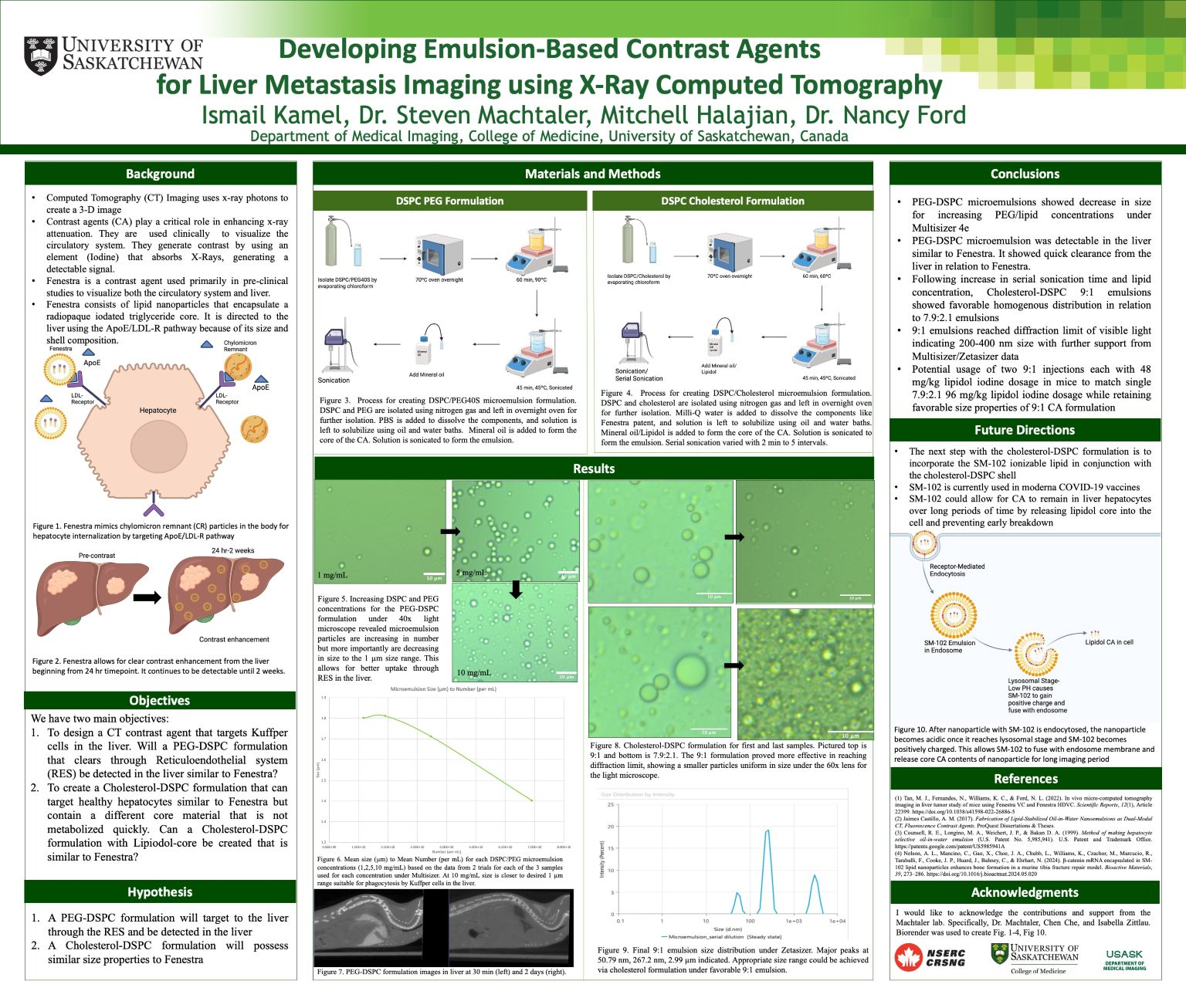
Developing Emulsion-Based Contrast Agents for Liver Metastasis Imaging using X-Ray Computed Tomography
Ismail Kamel
Contrast agents play a critical role in enhancing x-ray attenuation under Computed Tomography (CT) Imaging and are used clinically to visualize the circulatory system. They generate contrast by using radiopaque elements (iodine) that absorb X-Rays which generates a detectable signal. Fenestra is a contrast agent used primarily in pre-clinical studies to visualize both the circulatory system and liver. Fenestra is directed to the liver using the ApoE/LDL-R pathway because of its size and shell composition. In this project, two different formulations were created for potential liver metastasis identification using CT imaging. DSPC-PEG formulations were created for targeting Kuffper cells to clear through the Reticuloendothelial system (RES) and was tested for liver detection. Lipidol-core based DSPC-Cholesterol formulations were tested to see if they could possess similar size properties to fenestra, allowing for similar methods of clearance. Increasing concentrations in DSPC-PEG revealed decreasing emulsion sizes to optimal 1 µm size range. In DSPC-Cholesterol, increasing lipid concentrations along with serial sonication in 9:1 lipid to Lipidol emulsions presented favorable 200-400 nm size distribution. Emulsion size analysis was supported by Multisizer/Zetasizer data and microscope scans. To allow for long-term contrast imaging in DSPC-Cholesterol formulations, further studies may incorporate SM-102 ionizable lipid into emulsion shell.
